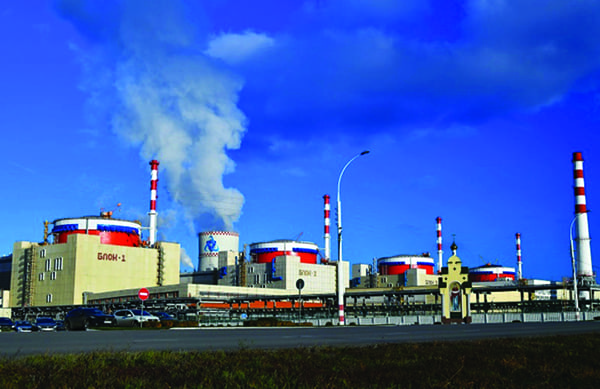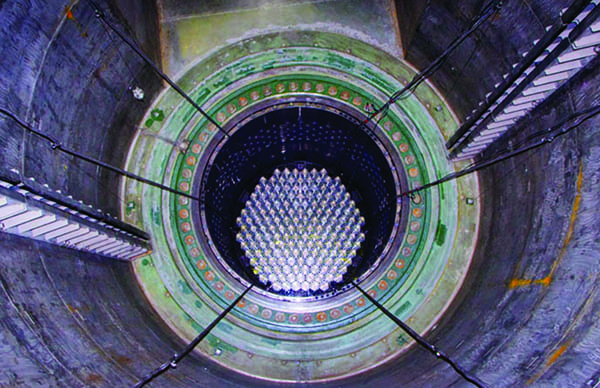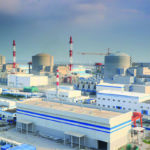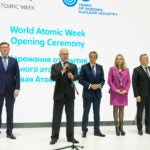Russia’s nuclear engineering and construction firm Rosatom in December brought the fourth unit at its Rostov nuclear power plant (NPP) near Volgodonsk in southern Russia to first criticality. Later that month, it completed fuel loading at the first unit of the second-phase Leningrad plant in northwest Russia. The units are the 36th and 37th reactors in a fleet that provides about 18% of Russia’s power.
Completion of the criticality program at Rostov 4—a 1,000-MWe VVER pressurized water reactor (Figure 3)—marks a milestone for the final unit under construction at the Rostov nuclear plant. Rostov 1 was completed in 2001 following economic reforms in the aftermath of the Soviet Union as the first unit of Russia’s nuclear “revival,” which entailed completion of long-delayed units. Russia, which then had 21 GW of nuclear power on the grid, has since added six reactors to its grid: Kalinin 3 in 2004; Kalinin 4 in 2011; Rostov 2 in 2010; Rostov 3 in 2015; Beloyarsk 4, a fast neutron reactor, in 2016; and Novovoronezh NPP-II Unit 1, a first-of-its-kind VVER-1200, in 2017.
Rostov 4, meanwhile, is also the country’s last VVER-1000 under construction. According to the World Nuclear Association, water-water power reactors (VVERs) evolved from an OKB Gidropress design dating back to the 1980s. Rosatom, which is building Rostov 4 for its subsidiary Rosenergoatom, noted that 34 VVER-1000 units operate around the world, including nine in Russia. Five other nuclear plants are under construction in Russia. Three—Novovoronezh NPP-II 2 and Leningrad NPP-II 1 and 2—will use the third-generation VVER-1200 reactor design, while the other two—Kursk NPP-II Units 1 and 2—will use yet another evolution, VVER-TOI.
In late December, Russia completed loading fuel under a physical startup program at Leningrad NPP-II 1 (Figure 4). Commissioning is scheduled in 2018. The Leningrad units are expected to allow Rosatom to replace existing capacities of the first phase Leningrad Nuclear Power Plant.
Rosatom has meanwhile built advanced versions of the VVER-1000 with western instrument and control systems at Tianwan in China, and at Kundankulam in India. The company in late December noted that power startup at Tianwan 3 had been completed and the unit was connected to the grid—just five years after the start of construction. Rosatom built the first two units at Tianwan in cooperation with Chinese state-owned firms. “Construction of the third and fourth power units of the Tianwan NPP are being implemented in record-breaking time and can be considered examples of excellent international cooperation in the energy field,” Rosatom said.
—Sonal Patel is a POWER associate editor.












